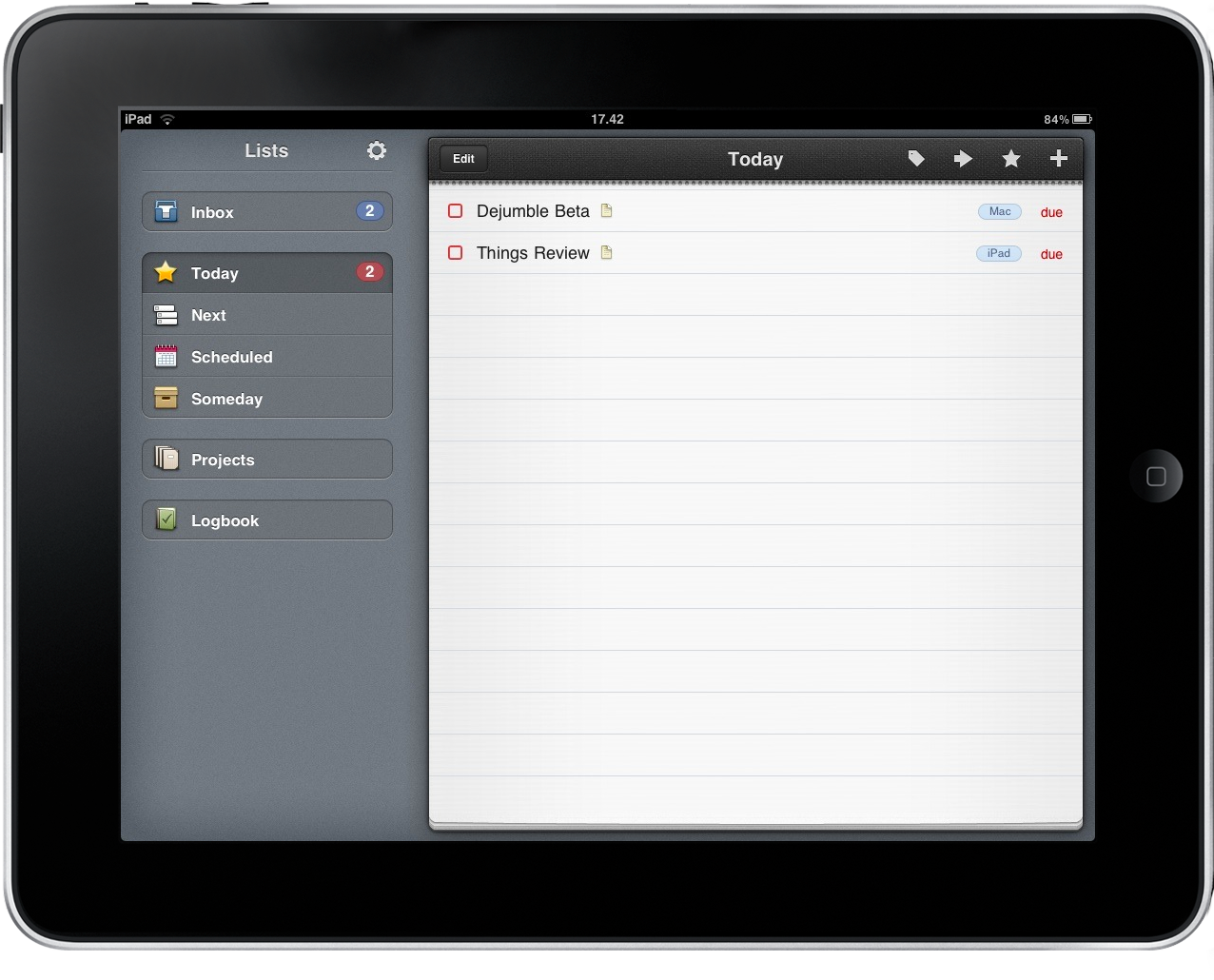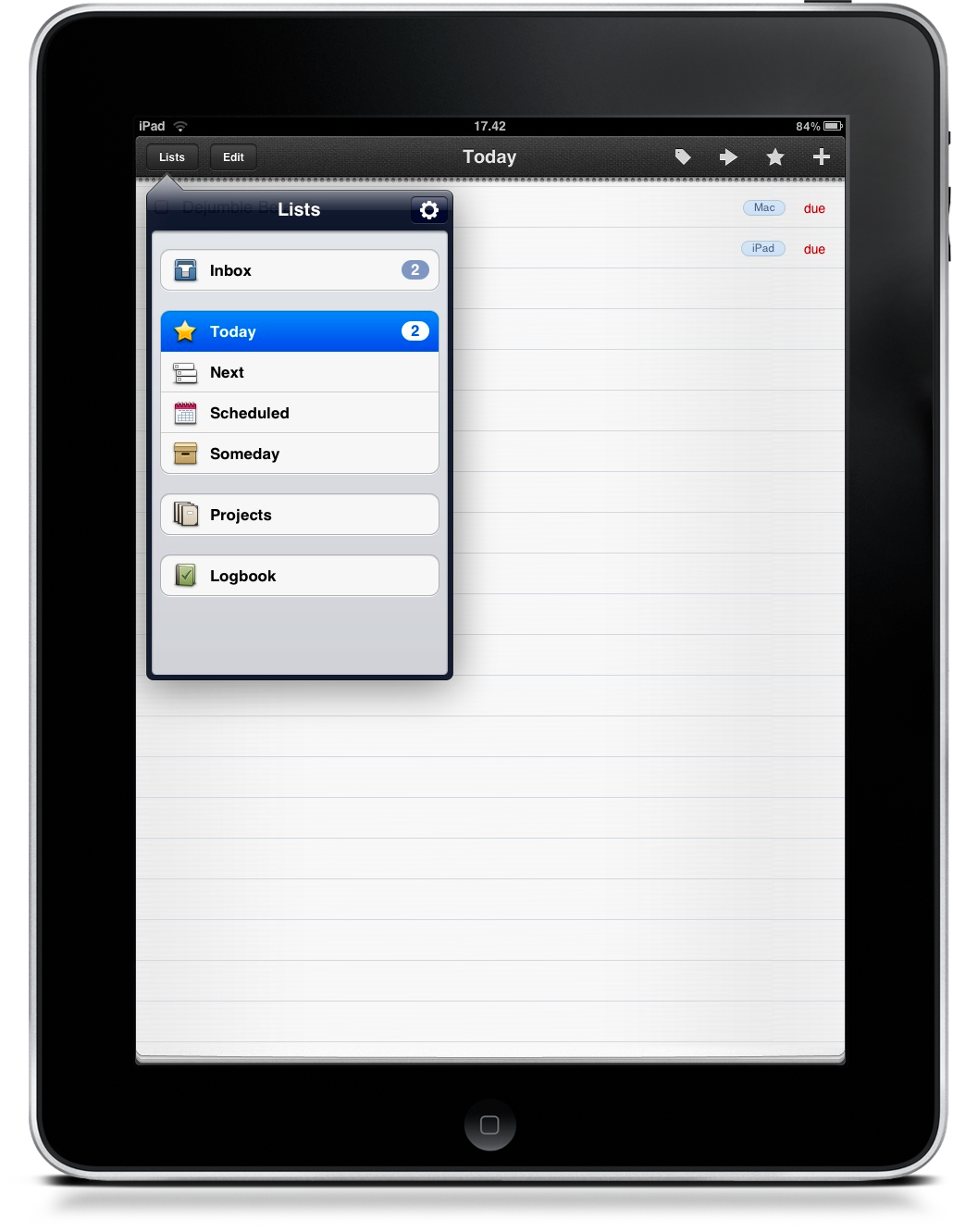I got started to the GTD method years ago with Things from Cultured Code. It was a simple, good looking application that didn’t aim at empowering me to do tons of, ehm, things with my tasks, but it focused on simplicity and ease to use instead. Back then, it was the only app I needed to stay productive and keep up with my todo list.
As time went by though, I realized that my daily todo list was growing so much in contexts that I simply couldn’t rely on Things anymore. I felt the need for something specifically meant for me, and in a world were software aims at uniforming us to every other user, that was just impossible. So I decided to create my own, custom and highly efficient solution which was a mix between GTD, a text editor and a folder structure that actually held up for a few months. But it inevitably failed miserably after a hundred days of heavy work and editing.
So I went back to the GTD method, and once again I went back to using Things. The second coming of Things was actually way better than the first one, and I kept it in my dock for many months. Still, I felt there was something missing from that setup and, to my surprise, I decided that maybe it was time to give a try to Omnifocus, the GTD app many Mac users were fearing because of it’s complexity and that, as you may have read in my review months ago, it turned out to be the perfect desktop solution for me. Contexts, projects, over the air sync with the iPhone app: my GTD workflow just couldn’t get any better.
Or maybe not, because the iPad came along and I realized that it could be the best device for my productivity. Slowly - but this is something that’s still happening - I started moving all my work on it: writing posts, managing tasks, emails, browsing. I installed Taska, I loved it and I’m still using it.
Now the question is: can a new version of Things make me reconsider the app once again? But most of all, can the iPad itself make Things better?
The answer is yes: if you, like me, think that the iPad has made you more productive and has opened new possibilities for your work, then Things is no doubt a better app on this device. It’s ubiquitous as the iPhone app, but it retains the capabilities of the Mac version, real screen estate included. It’s a pleasure to tap around, add tasks and create projects, and if you mix this with a gorgeous user interface (possibly one of the most elegant I’ve seen so far. It deserves an Apple Design Award ) you’ll realize why Things is no doubt a great app.
Like most all iPad apps, Things allocate its lists in a left sidebar when in landscape mode, and moves them into a popover when holding the iPad in portrait mode. In the sidebar you’ll find all the sections of Things you’ve gotten used to know, like the Inbox, Projects and Tags. Considering that I’m currently using Taska, I didn’t remember that Things doesn’t allow you to create folders for tasks, as it simply relies on projects and tags to let you organize your activities. So, if you want to group tasks in a way that doesn’t necessarily involve a project (can you call MacStories Posts a project?) you either have to create a set of tags just for that group or forget about it. Somebody on Twitter told me that folders are so last year, but I still haven’t managed to like tags at all. I’m still more orientated towards a folders / context system, and Things doesn’t have none of these.
You can create Areas of Responsibility and Teammates, and on the desktop version they are quite useful to sort and assign tasks. Too bad there’s no way to create sub-areas and roles for teammates, so I don’t see them as replacements for folders and contexts. Also, teammates don’t get synced to the iPad version by now. So it’s either tags or projects or nothing; areas should be better developed and have more customization possibilities for power users.
Once you get over this - and it’s very likely that you won’t see it as a limitation as much as I do - Things is indeed a great application, and nothing can’t be argued about it. The local sync with the Mac version works good as expected, adding and organizing tasks it’s both functional and fun and I quite liked the page curl effect every time you change from, say, Today to the Inbox. You don’t mess with Cultured Code when it comes to user interface design. As for OTA sync, the developers are working on it, but there’s no release date yet. We all know that once OTA sync for Things will ship, many other users will jump on CC’s boat, for sure.
In spite of all the problems I’ve mentioned above, I can’t help but like Things for iPad: it’s a beautiful app, with almost the same features you can have in the Mac version which make adding tasks a real pleasure. The workflow is exceptional (adding tasks is easy, popovers are very intuitive), the app is stable and responsive and I haven’t experienced a single problem with sync so far. If you’re already a Things user, you don’t even have to ask if this might be the app for you. If you’re a Things user, you should think about what you need and don’t, and maybe Things might work for you as well. Me, I’m going to keep this on my home screen and see how it compares to Taska in the long run. Perhaps the iPad will turn out to be a magical device once again, and make me switch to Things for the third time. I hope so.



